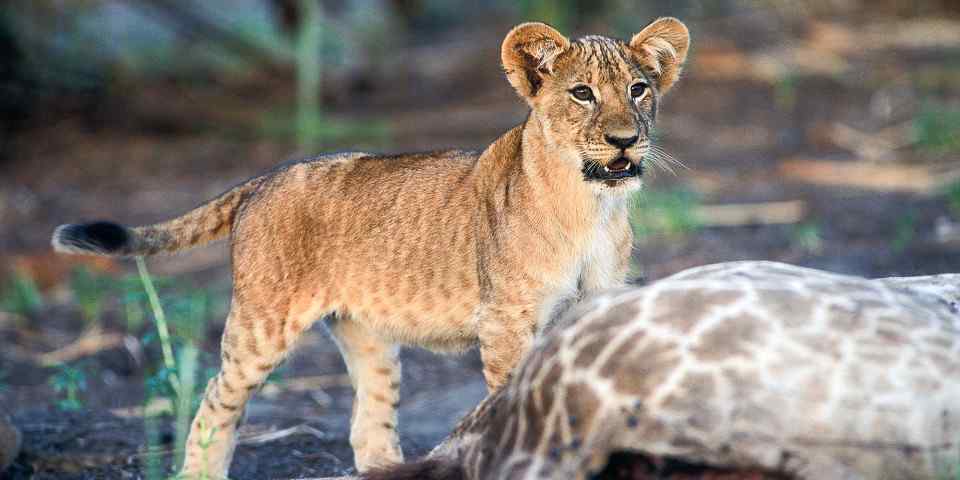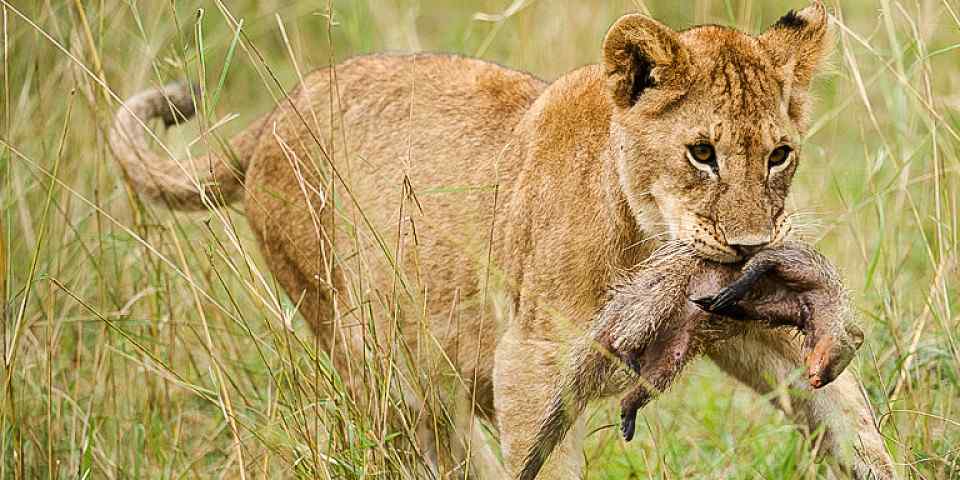
Africa's Decreasing Elephant Population: Country-by-Country Analysis
 By Jeroen Beekwilder
By Jeroen Beekwilder 
Jeroen is co-owner of SafariBookings.com. His desire to feel connected powers his love of travel. He has traveled all over the world with his wife and two children.
The elephant has been an icon of African wildlife for many years. To see one in the wild is often a primary reason for people to do an African safari. But will it be around for many more years?
As the largest online marketplace for African safaris, we have grave concerns for the future of Africa’s elephant population. That is why we decided to do a country-by-country analysis of the elephant population in the 10 major safari countries. Our analysis highlights differences in population levels, and country-specific issues regarding elephant management. By examining elephant numbers in these countries, and any changes in recent years, we can start to build a picture of the current status of the African elephant, and look for explanations for any changes in population levels.
Elephants by Country in sub-Saharan Africa
The following country-by-country analysis is reflected in the data that has been translated into graphs in this article. It puts the spotlight on the 10 main safari countries in sub-Saharan Africa, analyzing the overall decrease/increase of elephant populations; and the numbers of illegal elephant carcasses found, which provides evidence of poaching activity.
Elephant population numbers are represented in the period from 1995 to 2015, while the recording of illegal carcasses only began in 2002. According to the data, the period between 1995 and 2007 sees an increase in overall elephant population numbers of 62%. In the 10 countries being examined, in total the population rose from just under 300,000 to 485,000 elephants. All countries except Zambia and Malawi (where populations fell) recorded large increases in elephant numbers. For example, in Botswana the population rose by a staggering 116% to 154,658, and Tanzania saw a rise of 59% to 136,753 recorded elephants. The end of Mozambique’s civil war in 1992 was a blessing for people and wildlife alike. It’s elephant population rose from 825 to 16,475 during this period. South Africa and Namibia almost doubled their elephant populations, and Kenya, Uganda and Zimbabwe all saw healthy elephant population increases.
The period from 2007 to 2015 tells a different story, and this is the focus of our country-by-country analysis below. It highlights changes in population and illegal carcasses, between 2007 and 2015 – a period which saw a 30% decrease in overall populations of African savannah elephants:
Tanzania has a large elephant range, encompassing almost 400,000km², which is just under half of the total area of the country. The human population of Tanzania was almost 54.5 million in 2015, which is a about a 30% increase since 2007. GDP per capita increased 25% to $842.44 over this time period. Wildlife-rich Tanzania experienced the largest loss of elephants, both in numbers and in percentage terms of its elephant population. Losses were heaviest in the west and south of the country. The 2007 population levels were reduced by more than a whopping 86,000 individuals by 2015, which represents a fall of about 63% in the overall elephant population. As the losses show, elephant protection is a formidable challenge, especially with the country’s population growth. Due to being identified as having a worrying involvement in the illegal ivory trade, CITES requested a National Ivory Action Plan in 2013. Better news was the success in anti-trafficking efforts in 2015 which led to some prominent arrests. Illegal carcasses more than doubled in this period: 46 were found in 2007, rising to 203 in 2011 and then falling back to 119 in 2015.

820,000 km2Elephant range:
400,000 km2 (40%)Elephant population:
86,000
Poaching is the main cause for the decline
There are various factors involved in the decline of African elephants, such as loss of habitat and conflict with humans, however the overwhelming reason for the fall in population levels is poaching, as confirmed by researchers of the Great Elephant Census. “These dramatic declines in elephant populations are almost certainly due to poaching for ivory,” the study said.
The World Wildlife fund agree, pointing out the importance of the demand for ivory in Asian markets as a key component for the increase in poaching levels, “…there has been an upsurge in poaching and illegal ivory trafficking in recent years, driven by increasing demand in Asia.”
The poaching is driven by market demand for ivory in Asia, especially Vietnam and China. Although in a recent, positive development, China announced that it was banning the commercial trade of ivory by the end of 2017. This would cut off the world’s largest market for ivory, although it could also push the trade onto the black market. Time will tell...
CITES identified poaching as the main concern for elephant populations a year before the release of the Census results: “Poaching levels continue to pose an immediate risk to the survival of African elephants with the overall poaching trends in 2015 showing the Africa-wide elephant populations still in decline.”
Country factors that influence poaching
The decline in elephant populations varies markedly between countries. It is logical therefore to assume that the level of poaching also varies significantly between countries.
The factors that influence the level of poaching in individual countries are:
Anti-poaching capabilities: the anti-poaching capability of countries varies markedly depending upon the skills and professionalism of rangers and anti-poaching units. Influencing factors can be how well paid they are, how motivated, and the kind of training and equipment they receive. These in turn are affected by Economics (see later) and they are most certainly influenced by Politics (see later) – ie: the level of political will to address poaching.
Border vulnerability: This is an important variable between countries. Some countries have small, well protected, borders, such as Swaziland, while others have large, unprotected borders that are far more difficult to control, for example Tanzania. Or take South Africa, generally good border protection, but it has a long, porous border with Mozambique along the boundary of Kruger National Park, which is very vulnerable to infiltration by poachers.
Corruption: where there is money to be made there is always the possibility of corruption. Individuals in governments and people with access to ivory are those who stand to make personal fortunes from the illegal trade in ivory. An example is rangers and others working in national parks, who, for the most part, are honest, ethical park employees, who would never consider killing an animal they are paid to protect. However, individuals in the past have been charged with colluding with poachers.
Economics: Some countries in Africa are more capable of looking after their wildlife populations and being actively involved in conservation because they can afford to be. Others are not so fortunate. This is particularly the case in poorer regions such as central and West Africa that have seen large declines in elephants. Where economies are thriving (such as East Africa) governments can more easily afford to look after their protected areas. Stable countries have a healthier tourism industry, which is vital for the parks as well. When money is coming in, local people see the point of conserving the parks.
Politics: Political will plays a big role in elephant conservation. The willingness of the government to prioritize wildlife (and in this case elephant) conservation, fight off the poachers and actively assist in creating viable habitats has a big influence on poaching levels. Some countries have received large amounts of assistance from some international organizations such as Peace Parks. The Peace Parks Foundation will only work where it get local support though. They will bring in the money and the know how, but if the local governments don’t play their part, they will pull out.
Conclusion
With more than a 30% drop in the savannah elephant population in 10 eastern and southern African countries (including all those with major elephant populations), and the rate of the decline increasing between 2007 and 2015, it is clear the Africa elephant is in trouble and its future uncertain.
While there are a number of factors, such as loss of habitat and conflict with humans, that influence this drop in elephant populations, experts agree poaching is the major cause of the decline. However, less clear are the factors which influence poaching in individual countries.
The rate of poaching is not uniform across countries – in fact it varies sharply. The data shows that Tanzania lost by far the most elephants, with Botswana, Zimbabwe and Mozambique also losing significant numbers. In percentage terms, looking at total country elephant populations, Tanzania and Mozambique experienced the largest losses, at 63% and 34% respectively.
The reasons some countries are more susceptible to poaching can be complex (anti-poaching capability), inter-related (economics and politics), are geographically influenced (border vulnerability) and are not always clear (corruption). While some of these are more applicable to particular countries, it is difficult to nail down the exact reasons why poaching is worse in some African countries than others.
Nevertheless, while factors influencing poaching levels in individual countries remain complex, it is clear that elephant population levels are falling fast, at about 8% annually as ivory demand from Asian markets drives increased poaching activity, and that this is unsustainable. The alarming loss in elephant numbers can only be tackled through a specific country-by-country strategy. Such a strategy must incorporate new and better conservation techniques tailored to each country’s specific and unique circumstances. It needs to be rapidly researched and implemented for the long-term survival of the African savannah elephant – before it’s too late.
About the data
The data used in this article comes from sources such as the Great Elephant Census (www.greatelephantcensus.com), the Convention on International Trade in Endangered Species of Wild Fauna and Flora (www.cites.org), The World Bank (www.worldbank.org) and the International Union for Conservation of Nature (www.iucn.org).
Numbers of illegal carcasses found in a country are only an indicator of poaching levels – without more concrete evidence they are more representative of a country’s capacity or willingness to find the carcasses.
Former CITES project leader and statistician Fiona Underwood points out the notoriously difficult task of finding accurate statistics with regards to poaching. Basing poaching figures on seizure rates (in the case of elephants, hauls of illegal ivory recovered) for example is problematic because as Ms Underwood says, “unless you know the context within which the seizures were made you cannot say that the change in the number of seizures reflects the change in illegal activity”.
“Changes in the seizure rate are vulnerable to availability of staff and equipment (such as X-ray machines or dogs at customs); the ability to detect seizures (training, quality of intelligence); and socio-economic environment factors (such as a change in governance, corruption, economy, development, legislation).”
 By Jeroen Beekwilder
By Jeroen Beekwilder  NL
NL
Jeroen is co-owner of SafariBookings.com. His desire to feel connected powers his love of travel. He has traveled all over the world with his wife and two children.
African Safari Tours
-
![8-Day Southern Serengeti Wildebeest Migration Safari]()
8-Day Southern Serengeti Wildebeest Migration Safari
$2,970 pp (USD)
Tanzania: Private tour
Mid-range Lodge & Tented CampYou Visit: Arusha (Start), Tarangire NP, Lake Manyara NP, Ndutu (Southern Serengeti NP), Central Serengeti NP, Ngorongoro Crater, Arusha (End)

Meru Slopes Tours & Safaris
5.0/5 – 780 Reviews
-
![4-Day Classic Safari to Tarangire-Serengeti & Ngorongoro]()
4-Day Classic Safari to Tarangire-Serengeti & Ngorongoro
$1,495 pp (USD)
Tanzania: Private tour
Mid-range Lodge & Tented CampYou Visit: Arusha (Start), Tarangire NP, Serengeti NP, Ngorongoro Crater, Arusha (End)

Ndutu Green Explorers
5.0/5 – 80 Reviews
-
![8-Day From Bush to Brew; a Serengeti Escape]()
8-Day From Bush to Brew; a Serengeti Escape
$1,400 pp (USD)
Tanzania: Shared tour (max 7 people per vehicle)BudgetCamping & Lodge
You Visit: Arusha (Start), Tarangire NP, Serengeti NP, Ngorongoro Crater, Lake Manyara NP, Materuni Waterfalls (Highlight), Moshi (End)

Kilipath African Safari
4.9/5 – 286 Reviews



 Subscribe to our newsletter
Subscribe to our newsletter
 Follow us on Instagram
Follow us on Instagram

_1813_5e20b935b89f3.gif)



